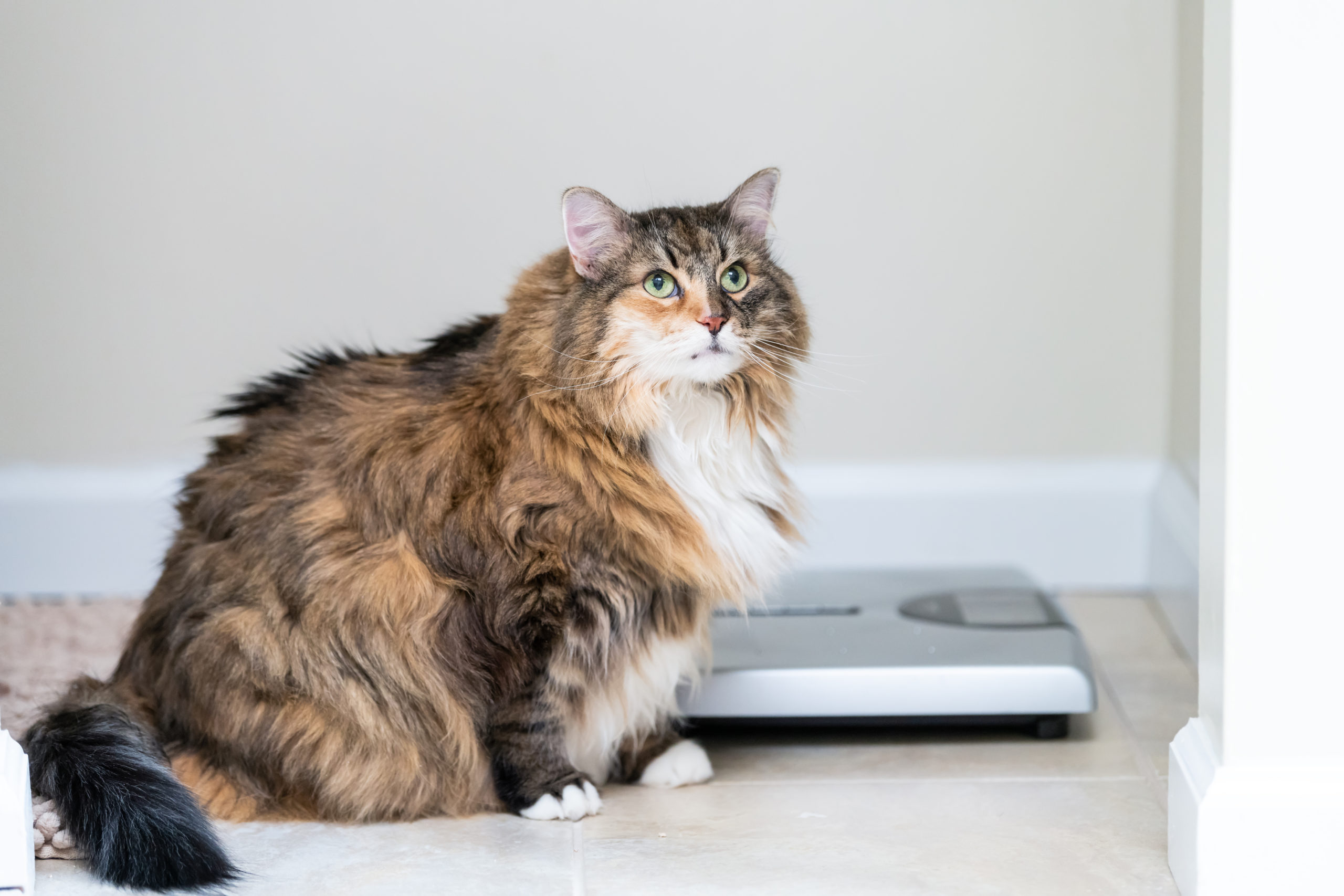
Is My Cat Overweight?
Did you know that over 50% of household cats are overweight? Cats are natural born hunters, but there’s little need to hunt in a comfortable home with treats to spare. This can lead to less activity and laziness. Overweight cats are more likely to develop serious health issues such as diabetes, arthritis, and difficulties with urination and constipation. So prioritizing your cat’s eating habits and physical activity is necessary.
How can you determine if your cat is overweight? The World Small Animal Veterinary Association (WSAVA) developed a Body Condition Score tool so cat owners can compare their cat’s weight to the chart’s scores, the ideal score being 5/9.
Start by examining your cat from all angles. If you easily feel their ribs along with a little covering of fat, your cat is at a healthy weight. If you can’t easily feel the ribs, your cat is likely overweight. Overweight and obese cats have lost their natural waistline, so their tummies drop below their knees.
How can I help my cat maintain a healthy body weight?
- Create a healthy and active environment. Take advantage of vertical space – cats love jumping and climbing. PLUS these activities burn calories and keep your cat energized. If you notice your cat sleeping all day, gently wake them up to play!
- Play, play, play. Playing is a lot more fun with a companion, and playing together is the best bonding activity. Help your cat find their inner predator by chasing toys. This provides mental stimulation and the opportunity for both of you to get some activity!
- Your cat’s diet is key. Look for food that’s higher in protein and lower in carbohydrates. Keep an eye out for organic, biologically appropriate cat food. These are more likely to offer better health benefits. Cornell’s College of Veterinary Medicine provides information about feeding your cat, and offers a section in relation to weight loss. If you’re unsure of the type of food that’s best for your cat’s health, consult your vet for recommendations.
- Measure your cat’s food portions. Determine how much food your cat should be eating in a day, then divide that amount into 3-4 different meals per day to prevent excess eating. You can even turn it into a kitty scavenger hunt by placing small amounts on food or treats in bowls around your house. Remember to take advantage of your cat’s perches and vertical space.
- Be firm with your cat’s diet. Saying “no” can be tough when your cat is begging for food or treats. But as their owner, it’s your responsibility to put their health first. Don’t feed your cat food that isn’t meant for them, especially when trying to keep them at a healthy weight. Extra calories that come with giving your cat a little piece of your food can prevent them from meeting their healthy weight, and can be detrimental to their overall health.
It’s a process. Take things slowly.
Healthy weight loss is a lifestyle, and takes much more than just limiting food. If your cat is considered overweight, and loses 1/4 to 1/2 of a kilogram every month, this is ideal. You don’t want to restrict your cat’s diet too much, as this can lead to liver problems. Rapid signs of weight loss can also be a sign of more serious issues, and should be examined by a vet. As always, if you’re feeling unsure or seeking more information, consult your vet. They will be able to help you create the best plan for success. Make sure to ask about more than just feeding – seek advice on enriching your cat’s environment and adding more activity into their daily routine.